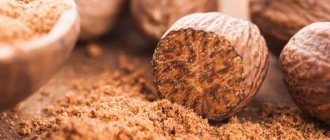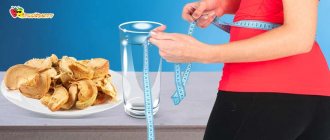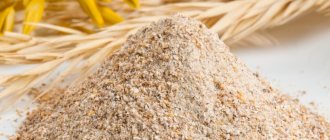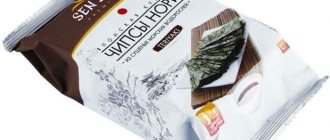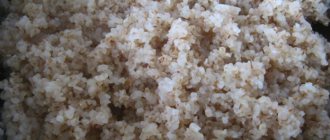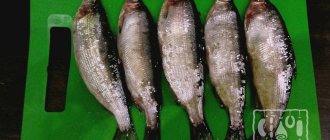Salt is the oldest natural mineral and one of the most popular natural minerals on Earth. However, in recent decades, serious scientific debate has flared up around this mineral. Some put salt on a pedestal, others equate it with a murderer, calling it “white death.” Where is the truth? How to figure out whether salt heals us or cripples us? Let's weigh the pros and cons and try to put an end to this difficult debate.
A little history
Even in ancient times, humanity learned about the extraordinary property of salt to change the taste of food. As a result, salt began to be evaporated and frozen out of sea water, and a little later, humanity learned about rock salt, which they began to extract from underground.
Very quickly, salt became incredibly popular. In the Middle Ages, this mineral began to be worth its weight in gold, and it was not for nothing that countries started real wars for the right to own salt deposits! In high society, salt was served to the table in special salt shakers inlaid with precious stones. And common people could not imagine their life without salt, just remember the Salt Riot in 1648 in Russia. In every house, guests were greeted with bread and salt; this product was stocked up for the winter; salt was present in many fairy tales and legends. And even the well-known expression “salt of the Earth”, about people who are of particular value to all humanity, says a lot about the importance of the mineral itself for all of us.
So, has humanity really deified a mineral so harmful to our body for many centuries?
The benefits of salt for the body
Initially, we will say that without salt a person simply could not exist! Salt is the main supplier of such essential elements for the proper functioning of the body as sodium and chlorine. A third of sodium is contained in human bones, the remaining amount predominates in nerve and muscle tissues, in extracellular fluids (including the brain), and independent production of sodium by the body is impossible. Sodium is necessary for interstitial and intracellular metabolism, activation of digestive enzymes, regulation of acid-base balance, and fluid accumulation in the human body. Sodium can be obtained from beets, carrots and other plant foods. In turn, chlorine contained in human tissues is indispensable in the regulation of water metabolism and osmotic pressure, in the formation of hydrochloric acid in gastric juice. Chlorine is found in foods such as meat, milk, and bread.
With a lack of sodium chloride (less than 0.5 g per day), a person experiences loss of taste and lack of appetite, nausea and flatulence, stomach cramps and increased fatigue, decreased blood pressure, frequent dizziness, weakness (even muscle cramps), memory loss and weakened immunity, problems with skin, hair and nails.
These facts alone are enough not to completely exclude salt from your diet. Another thing is the excess consumption of this mineral and the quality of the salt that ends up on our table.
What are the benefits of sea salt?
Its main difference from table water is its balanced iodine content, which the body often lacks. Sea salt contains a full range of microelements (potassium, sodium, calcium, iodine, iron, manganese, bromine and many others). All of them are actively involved in ensuring the normal process of life.
Its moderate use stabilizes hormone levels and improves the functioning of the nervous system. Thanks to selenium, the risk of developing cancer is reduced.
The presence of calcium increases blood clotting, promotes the formation of cell membranes, wound healing and neutralizes many bacterial infections. The presence of magnesium has a strong anti-allergic effect, and iodine improves hormonal and lipid metabolism.
The silicon content in sea salt guarantees healthy hair and nails, keeping them strong and healthy, and restores elasticity and firmness to the skin. Being present in the human diet, it strengthens the immune system and promotes the formation of red blood cells. The bromine it contains calms the nervous system and relieves overexcitation. The presence of potassium and sodium regulates nutrition and cleansing of body cells from toxins and harmful substances.
In addition to eating, sea salt is used externally to improve the health of the body and the effect is equivalent to swimming in sea water. Coarse sea salt is commercially available for these purposes. By diluting it in water to the desired consistency, you can achieve the desired healing effect. Hot baths with it are beneficial for colds, runny nose and diseases of the upper respiratory tract. Thanks to the inhalation effect, dry cough is softened, phlegm is cleared more easily, well-being improves and fatigue is relieved.
However, it can also be harmful, as it contains sodium chloride, which, if abused, can be harmful to health. Excessive consumption of any salt can lead to hypertension, cardiovascular disease, and stroke. The permissible daily dose of sea salt is 1 teaspoon. In everything you need to observe moderation! Then you will maintain your health.
Harm of salt to the body
It should be noted here that salt enters our body not only in the form of a separate product. It is found in almost any food we eat every day, from bread to fruit. But there is especially a lot of salt in canned foods (pickled cucumbers, sauerkraut, salted herring). What can we say about sausages, sausages and other semi-finished products, as well as salted nuts, chips, crackers and other harmful products.
If you abuse such food, and also add salt to food, its excess in the body will result in the development of edema, problems with the kidneys (due to their overload), high blood pressure (in hypertensive patients), as well as high intracranial and ocular pressure ( in people suffering from glaucoma). Constant thirst, sweating, increased nervous excitability and frequent urge to urinate also indicate excess sodium in the body.
The development of hypertension is indicated by the desire to salt food, constant taste sensations that the food is not salted enough - such a symptom is worth paying attention to. Excess salt in food whets your appetite (salt is a taste enhancer), and besides, after such a meal you want to drink a lot. That is, excess weight and swelling are guaranteed.
Salt can, if consumed in slight excess, increase the load on the heart muscle, liver, kidneys, and provoke a severe headache. Medical studies have shown that people exposed to excessive salt intake lead a predominantly sedentary lifestyle. Cognitive functions gradually deteriorate, and concentration is significantly reduced. When switching to a more active lifestyle, brain functions are restored.
What foods contain sodium?
The risk of “over-salting” on our dinner tables is greater than cases of “under-salting”, and this is due to the use of ready-made and semi-finished foods in the diet. The source of sodium chloride are cheeses, sausages, bread, canned food - they satisfy the basic need for salt; we take only a quarter of the food additive from the salt shaker. The adult body requires 4-6 g of sodium per day. The products presented in the table contain it in large quantities.
Table: sodium in food
| Product Name | Na content (mg/100g product) |
| Cereal products | |
| Rye bread | 430 |
| White bread | 250 |
| Butter loaves | 240 |
| Cornflakes | 660 |
| Vegetables | |
| Sauerkraut | 800 |
| Canned beans | 400 |
| Mushrooms | 300 |
| Beet | 260 |
| Celery | 100-125 |
| Berries and fruits | |
| Dried grapes | 100 |
| Bananas | 54 |
| Dates | 20 |
| Currant | 15 |
| Apples | 8 |
| Dairy products, eggs | |
| Milk | 120 |
| Eggs | 100 |
| Cottage cheese | 30 |
| Cheese | 800-1200 |
| Meat fish | |
| Beef, pork | 80-100 |
| Fish | 50-100 |
| Tuna canned | 500 |
When adding salt to food, you should always take into account that the necessary sodium is already present in food products, and its excess is harmful.
How much salt does a person need
It becomes clear that salt must be consumed in limited quantities. The World Health Organization (WHO) recommends eating no more than 2-3 g of this product (less than 1 tsp) per day. But according to statistics, a modern person eats 12–13 g of salt per day! Such high salt intake is harmful to anyone, but is especially dangerous for people with obesity, hypertension, gout, kidney disease, as well as menopausal and postmenopausal women.
Which salt should you choose?
1. Table salt “Extra” Table salt is present on our tables in 99 cases out of 100. In fact, this is a refined product that has an absolutely white color and even small crystals. As a result of thermal and chemical treatment, such salt loses its original properties, because only sodium and chlorine remain among the useful minerals. In addition, to make the salt crumbly, anti-caking agents are added to this product, which are also harmful. Salt of the first and second grade contains more microelements, and therefore it is more beneficial for the body.
2. Sea salt This salt is extremely beneficial for the body, as it is extracted by evaporation from sea water, due to which all valuable minerals remain in the finished product, including potassium, calcium, bromine, magnesium, iodine (more than 50 trace elements in total).
3. Rock salt Essentially, it is the same sea salt, deposits of which were formed in the place of dried up ancient seas. This salt has a smell that not everyone likes, but its taste is milder than table salt and is ideal for preparing first and second courses.
4. Iodized salt This is ordinary table salt, to which manufacturers add potassium iodide. This product is recommended for people with insufficient production of thyroid hormones (hypothyroidism), but this salt is contraindicated for people with hyperthyroidism. In addition, it has a limited shelf life and is not suitable for pickling and pickling vegetables.
5. Pink Himalayan salt This is a unique product that is mined in Pakistan, at the foot of the Himalayas. Himalayan rock salt has a pink color and a pleasant aroma. But more importantly, it contains 84 microelements that support the health of the body. True, the price of such salt is quite high.
Types of salt
Sodium chloride is the only natural mineral that has found use in food. Depending on the additives and the method of extraction, several types of food additives are distinguished.
Cooked
Rock salt, halite, is a mineral that is mined in mines, subjected to deep purification from impurities and microelements, and pure sodium chloride is obtained - table salt. It is often enriched with iodine - this element is needed by the thyroid gland; residents of regions far from the sea are constantly lacking it.
Video
Marine
The basis of sea salt is sodium chloride, but it also contains many valuable microelements such as iodine, potassium, and iron. They change the color and taste of the food additive, which, due to pollution of the World Ocean, may contain impurities of heavy metals. Scientific research proves that the human body is most adapted to metabolize sea salt.
Pink
Salt of this color is mined in the Himalayas; impurities of rust (iron oxide) give it an unusual reddish tint. In addition to iron, Himalayan salt contains up to 90 valuable microelements, including potassium, magnesium, copper, and calcium.
It is free from contaminants and its use for medicinal purposes is indicated for:
- optimization of digestion, prevention of constipation;
- strengthening bones, relieving joint pain;
- normalization of hormonal levels;
- improving heart function, cleansing the walls of blood vessels;
- maintaining normal blood sugar levels;
- boosting immunity.
Contraindications for the use of pink salt are tuberculosis, tumors of various etiologies, varicose veins and thrombophlebitis, renal failure.
Black
Black salt, which is mined in India, has less sodium component, so its consumption is justified with high blood pressure (less fluid is retained in the body), with constipation and flatulence. The presence of sulfur in Indian chloride crystals gives this additive the taste of hard-boiled eggs.
Treatment with table salt
Now let’s talk in detail about how salt helps fight certain painful conditions.
1. Toxicosis and severe vomiting Dissolve 1 tsp. ordinary table salt in a liter of warm boiled water and take 1 tbsp. at short intervals.
2. Severe diarrhea Dilute two teaspoons of salt in a liter of boiled water and drink this solution to replenish fluid loss from the body and prevent dehydration. You should drink in small sips over a short period of time.
3. Food poisoning Taking 2 tbsp. of the product in question, dilute them in a liter of warm boiled water and drink 2-3 glasses of this product. After the second glass, you will feel a strong urge to vomit and can easily get rid of the contents of your stomach, and therefore of toxins.
4. Tonsillitis, colds and sore throat After diluting 1 tsp. salt in a glass of warm water, gargle with this solution at least 6 times a day. It is also recommended to add 2 drops of iodine to the liquid.
5. Dry scalp eczema Take a handful of salt and rub it into the affected areas of the scalp without pressing for 10-15 minutes. Rinse off any remaining salt with warm water. Carry out such procedures twice a week for a month and this problem will no longer bother you. During the treatment period, refrain from washing your hair with shampoo, styling and using a hairdryer.
6. Fungal infection of the feet Just dissolve 1 tbsp in a glass of water. salt and wash your feet with this solution every night.
7. Nail fungus (onychomycosis) Dilute the salt as described in the previous recipe, then soak a piece of gauze in this liquid and apply it to the affected nail, holding it until the gauze dries.
8. Suppuration of the finger at the nail Dissolve two tablespoons of table salt in a glass of boiling water. Dip the sore finger into the hot solution and hold for 20 minutes. Repeat the procedures every day until complete recovery.
9. Colds Heat the salt in a frying pan for a few minutes, and then fill a cotton bag with a handful of such salt and apply it hot to the wings of the nose. By the way, it is useful to apply hot salt in a bag to the soles of your feet.
10. Excess weight Fill the bathtub halfway with water. Dilute 0.5 kg of table salt in it and gradually fill the bath to the optimal level. The water temperature should be around 25–30°C. Carry out water procedures for 15 minutes an hour before bedtime 2-3 times a week. The full course of therapy will be 8–12 procedures.
11. Treatment of hemorrhoids Hot baths can help treat hemorrhoids and relieve pain. They should be done for 3 days in a row before going to bed. To prepare the bath you will need 3 liters of water, to which 0.5 kg of table salt has been added. Boil the solution, cool to a temperature that can be tolerated, and take a bath for 15-20 minutes.
How salt is used in cosmetology
The cosmetic properties of salt are usefully used in cosmetics for face and body skin care:
- for whitening;
- wound healing;
- countering allergies.
Cosmetics based on this mineral normalize the functioning of the sebaceous glands and saturate the skin with beneficial microelements. Therefore, it is widely used in cosmetology in many spa salons.
It is even useful to simply wash your face with salt water - it has a tonic effect, and the skin will be velvety and silky.
For face
The benefit of salt for facial skin lies in its anti-inflammatory properties, which relieve irritation in inflamed areas. Young people with problem skin with acne are recommended to wash their face with a sodium chloride solution once a day.
It will also be useful to wash your face with salt when the first signs of skin aging appear: this is a great way to slow down cell aging.
To prepare a pure solution, take 1 hour per 200 ml of purified water. L. mineral. Wipe the face with the resulting solution once a day before applying the nourishing cream.
For hair and scalp
When used regularly, the benefits of salt for the scalp include stimulating hair growth, reducing hair loss and keeping the scalp healthy. In addition, it regulates the functioning of the sebaceous glands, which has a beneficial effect on the condition of the epidermis and prevents the occurrence of dandruff.
The benefits of sea salt for hair are higher, but if you don’t have it on hand, table salt will do. Based on it, you can prepare a mask to cleanse the scalp, as well as nourish and strengthen the hair. For this, 1 tbsp. l. The mineral is mixed with one mashed banana and applied to the skin and hair. Then wrap your head in a towel, leave for 30 minutes, then wash off. Such a mask cannot be made in cases where there is any mechanical damage to the dermis, otherwise it can cause even more harm.
For body
Sodium chloride is used to make body scrubs; it can also be added to bath water. This has a calming effect on the nervous system and strengthens the immune system.
The benefits of salt for the body are:
- in cleaning the skin of dead cells;
- removal of toxins and harmful substances through the pores;
- getting rid of excess moisture.
As for peeling with salt, its benefits will be greater when the procedure is carried out using the marine variety. A regular kitchen one will simply cleanse the dermis, while a sea one will nourish it with useful macro- and microelements.
To prepare a body scrub, you need to take 1 cup of salt and mix 0.5 cups of massage oil. Gently rub into the entire body, leave for 5 - 10 minutes, then rinse.
For legs
Salt water baths are widely used for feet. This procedure eliminates swelling and perfectly relieves fatigue. The benefits of sea salt for feet include caring for rough skin and brittle nails. Regular baths will make the surface of your feet soft and your nails healthy.
Recommended reading: Benefits of whole wheat flour
To prepare a bath, take 2 tbsp per 1 liter of water. l. mineral. The water must be hot, not lower than 50 °C. Soak your feet for 15 - 20 minutes, adding a hot solution if necessary.
Brushing teeth with salt
Using this procedure, you can effectively whiten tooth enamel without resorting to expensive drugs. The benefits of brushing teeth with salt are manifested in a beneficial effect on the properties of enamel and improvement of its structure.
Salt penetrates deeply into the structure of the surface layers of enamel, removing dirt and brightening it. Antibacterial and disinfecting properties prevent gum inflammation and caries, and also help eliminate bad breath.
To brush your teeth using this method, you should wet your toothbrush and then dip it in a container with salt crystals. The stuck particles are quite enough for the procedure.
Important! The benefits of sea salt for dental health will be greater if you mix it with white, blue or pink clay.
Sea salt treatment
1. Chronic tonsillitis, sore throat, sore throat A teaspoon of sea salt should be dissolved in a glass of warm water and gargled several times a day.
2. Vegetative-vascular dystonia, insomnia and neuroses Every morning, wipe with cool water (1 l), in which sea salt (3 tbsp) has been diluted. After 30 days of daily therapy, you will be pleasantly surprised by the results obtained. Such rubdowns also help strengthen the body and increase immunity.
3. Contusions, bruises and bruises Take 2 tbsp in a glass of cold water. sea salt. After moistening several layers of gauze in the solution, apply it to the affected area for two hours.
Salt and weight loss
People who are trying to lose weight should definitely limit their salt intake. There are even salt-free diets. Excess salt leads to swelling. It is believed that a single extra gram of salt contributes to the retention of 100 ml of fluid in the body. Table salt is a natural flavor enhancer; it promotes uncontrolled overeating and weight gain. As a result, additional stress is created on the cardiovascular system and musculoskeletal system.
It is best to salt food with sea salt, which contains a large amount of useful minerals. But in any case, it is necessary to reduce salt consumption to a minimum. To improve the health of the body, you should remove the salt shaker from the table and do not add salt to dishes, even if they seem unsalted. It is imperative to give up processed foods, exclude fast food, salted nuts, and chips from your diet. You should limit the use of various gravies and sauces containing large amounts of salt. It is better to season salads with vegetable oil and either lemon juice. It is important to remember about hidden salt, which is contained in sausages and cheeses.
What foods contain sodium
Sodium contained in salt is the main source of the required daily requirement. But, besides this, a person receives this mineral from the following products:
- meat;
- Fish and seafood;
- bakery products;
- cheese;
- seaweed;
- green pea;
- canned vegetables.
We recommend reading: The benefits of corn starch for the body
Sauces such as ketchup, mustard, and ready-made salad dressings contain a large amount of sodium. For example, a tablespoon of soy sauce contains half the daily requirement of this microelement.
Benefits of a sea salt bath
Separately, it should be said about a bath with sea salt. This method of therapy is considered a very effective remedy for such ailments as:
- increased nervousness;
- stress and sleep disorders;
- metabolic disease;
- vascular atherosclerosis;
- problems with joints and spine (osteochondrosis, arthrosis, arthritis);
- skin pathologies caused by allergies (eczema, seborrhea and psoriasis, diathesis and dermatitis);
- hypothyroidism;
- decreased immunity;
- cellulite.
Before taking a bath, be sure to rinse with soap in the shower. Take water at a temperature of 35–37°C and add approximately 250–300 g of sea salt. This will be quite enough to calm and relax. If you want to carry out medical procedures, the salt concentration should be increased to 0.7–1 kg.
And further. After the water procedure, do not rush to dry yourself. Simply pat your skin with a terry towel to remove moisture. The beneficial substances remaining on the skin will be absorbed for another 1.5–2 hours.
One has only to remember that salt baths are contraindicated for people with purulent skin diseases, people with malignant and benign tumors, arrhythmia, tachycardia, hypertension types 2 and 3. For tuberculosis, vein thrombosis, exacerbation of infectious diseases and pregnancy, this treatment is also contraindicated.
Cosmetics made from salt
Surprisingly, ordinary salt can be an excellent cosmetic product that comes to the rescue in a variety of situations. Here are some examples.
1. Oily skin prone to acne Dilute a tablespoon of sea salt into 3 tablespoons. water to which a little baby soap was previously added. Apply the resulting mixture to your face, rubbing the product in circular massaging movements, then wait two minutes and rinse with warm water. Literally 2-3 procedures per week will very quickly give the desired result.
2. Brittle and peeling nails If your nails begin to peel and break, pour 0.5 liters of hot water into the bath and dilute 2 tablespoons in water. sea salt. Keep your fingers in this bath for 15 minutes daily. There is another useful recipe. Cut the lemon into two halves, sprinkle one half with sea salt on top, and then dip your fingers into the pulp for 10 minutes. At the end of the procedure, rinse your fingers with water and blot with a napkin. Do 10 such procedures, and if necessary, repeat the course in a month.
3. Problems with hair growth To achieve beautiful and lush hair, you also cannot do without sea salt. 1 tsp Dissolve this product in half a glass of heated kefir, add 2 tbsp. water and one egg yolk. Apply the prepared mixture to your hair, gently rubbing it into the scalp, then wrap your head in a towel and leave for 30 minutes. Hair should be treated in this way 2 times a week for two months.
4. The presence of comedones on the skin of the face Many cosmetic products have been developed to combat blackheads on the face. But you can easily deal with comedones on your own if you have sea salt on hand. To prepare the cleanser, simply grind 1 tsp. sea salt in a coffee grinder and mix the resulting pollen with 1 tsp. m soda. Wet the problem areas of your face with water, then soak a damp cotton swab in the prepared product and apply it to your face in a circular motion without putting too much pressure on the skin. Leave the product on for 10 minutes, then rinse with cool water and apply moisturizer. Do this mask once a week and after a month the problem of comedones will no longer bother you.
5. Anti-cellulite, cleansing body scrub in the bath Mix salt and soda in equal proportions. After the steam room, apply the scrub to the body using circular movements and light pressure. Massage lightly and leave on body for 5-15 minutes. Baking soda softens the skin, salt promotes the release of fluid, disinfects and cleanses the skin. You can also prepare a body scrub using honey and salt. Health and beauty to you!
